Fabric Focus: Thick, Textured Matelassé
http://decor-ideas.org 07/07/2015 05:19 Decor Ideas
Matelassé is a thick fabric with a quilted appearance. But unlike a quilt, which pieces together two layers of cloth with a central batting, matelassé is a single piece of fabric made on a jacquard loom. It gets its puckered look from an additional set of yarns of coarse cotton, sometimes called crepe, that are shrunk during the finishing process. Here are some benefits of this favorite fabric and some different ways to use it in your home.
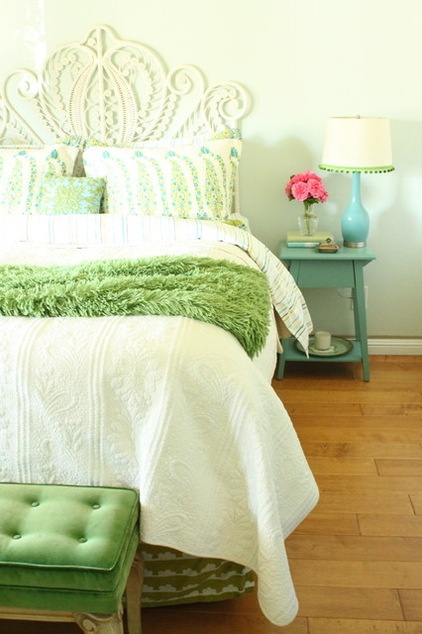
What is Matelassé?
Matelassé (pronounced mat-la-SAY) is believed to have originated in Marseilles, France, and is also sometimes called Marseilles cloth, marcella or pique de Marseilles. Its name comes from the French word matelasser, meaning “to quilt.” Though the fabric was originally handmade, the invention of the jacquard loom by Englishman Robert Elsden made matelassé commercially available starting around 1760. At the time, it was used primarily for bed covers and fashion.
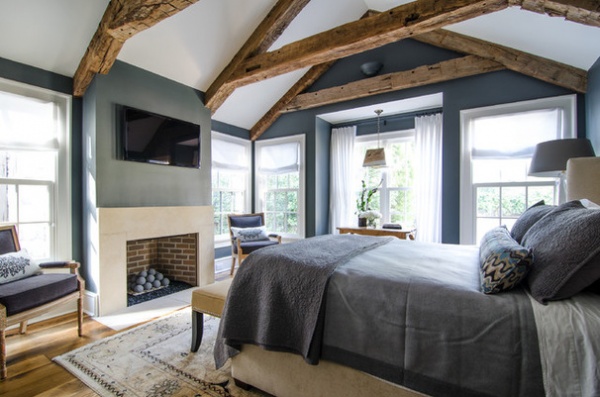
Single Color, Subtle Patterning
If loud patterns make you run for the hills but you seek some visual interest, matelassé might be for you. Invitingly subtle, it’s made in a single color, usually white or ecru, though other colors are popular too, like this handsome gray. Because matelassé is textural, its understated motifs are especially noticeable in natural light.
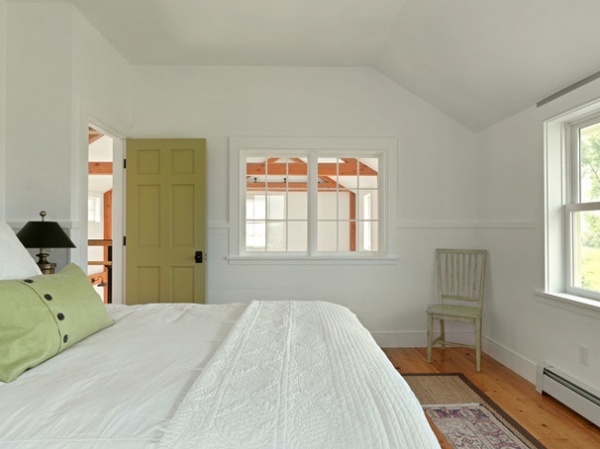
Perfect Summer-Weight Bedding
Most folks ditch the heavy down comforters for something lighter come summertime. Matelassé still offers some weight to shield against cool evening breezes and AC drafts, but without the bulk. Another plus is that matelassé won’t take up much room in your linen closet when it’s not in use.
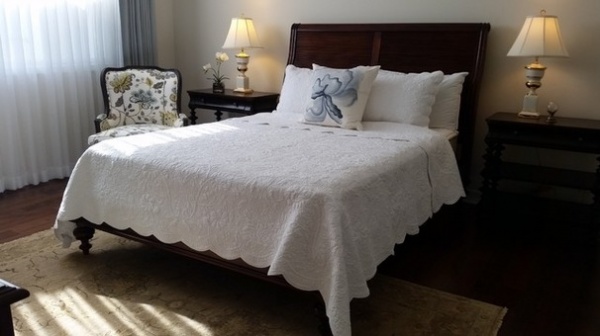
Traditional or Contemporary
Matelassé is often seen in traditional patterns like florals, as shown in the bedroom here, and more formal medallion patterns. Pretty scalloped edges add a touch of romanticism and nostalgia to traditionally patterned matelassé.
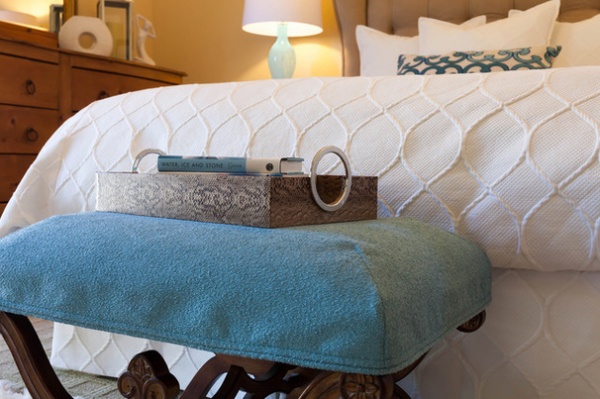
On the other hand, geometric matelassé patterns, like this trellis motif, lend themselves to more contemporary spaces.
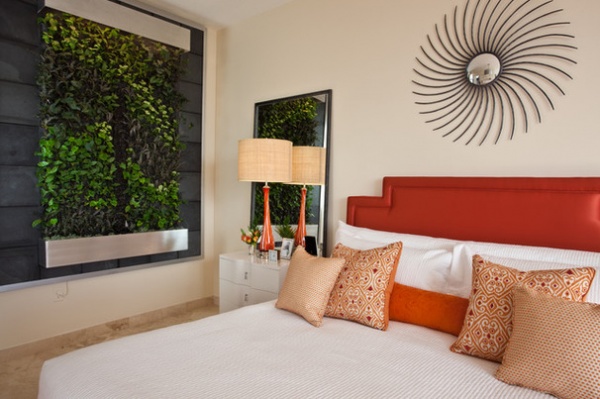
Likewise, the stark linearity of this matelassé bed cover blends well with the midcentury modern style of the room.
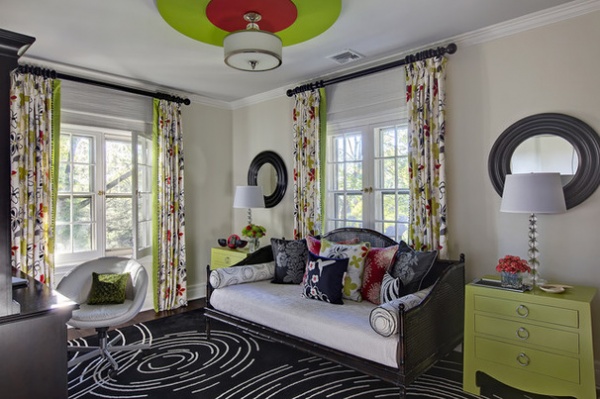
Buttoned Up or Relaxed
If you’re a neat freak, note that matelassé is probably one of the easiest fabrics to keep tidy. Because it’s lean and has a textured surface to add some grip, it’s easy to tuck under the bottom of a mattress. Many people use matelassé on daybeds and platform-type beds.
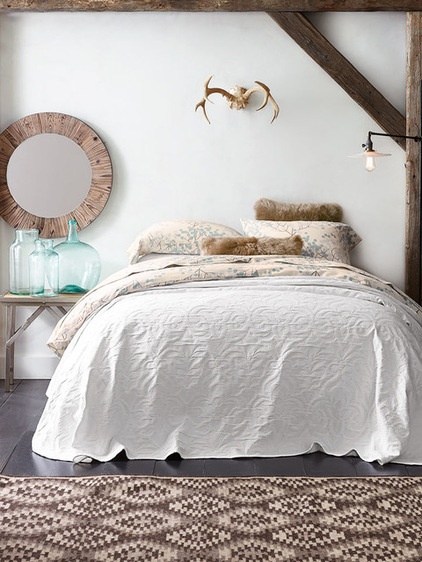
However, if carefree is more your style, know that matelassé drapes and flows to the floor just as effortlessly as it tucks in. It’s also a fast bed to make.
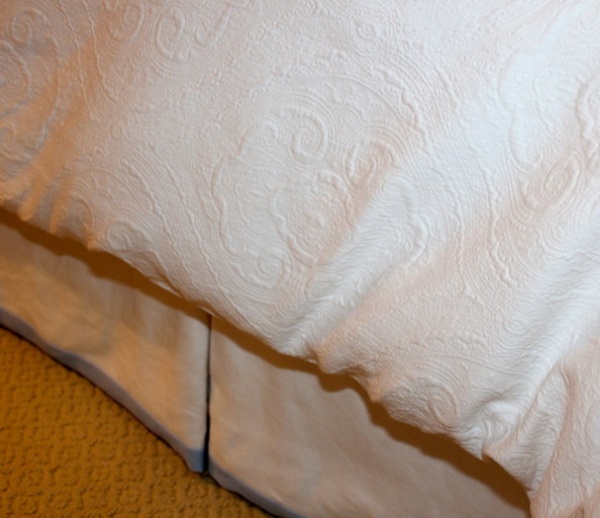
Designer Shirley Mitchell of Mitchell Designs says she likes using matelassé because it’s classic and adds texture and interest without competing with the other patterns in the room. For this duvet cover, she used a matelassé fabric called Bainville in an Egyptian cotton-acrylic blend by Robert Allen, which retails for about $110 a yard. Mitchell’s original intent was to use it just for pillow shams, but her client loved it so much they made it into bedding.
When using matelassé fabric for bedding, be aware of its width. Because this fabric is only 53 inches wide, Mitchell used a full piece down the middle of the duvet cover, then seamed two smaller pieces on the sides to make it wide enough. Some premade matelassé bedding is woven on wider looms and doesn’t have seams. However, making your own offers much more design flexibility because the same fabric can be used for pillows and bed skirts.
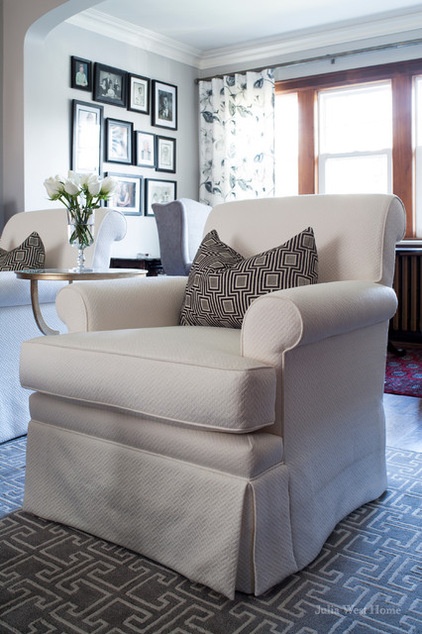
Upholstery
Matelassé isn’t only for bedding; it can be a great upholstery fabric too. This armchair is covered in a small-scale geometric matelassé pattern.
One thing to consider before using matelassé on upholstery is the amount of use and maintenance. Because the fabric’s design is raised, any soiling will tend to settle on the elevated motif and be especially noticeable. While regular professional cleaning is always recommended, light-colored matelassé upholstery is not the best choice for everyone, especially in homes with small children. Headboards and benches are additional upholstery options.
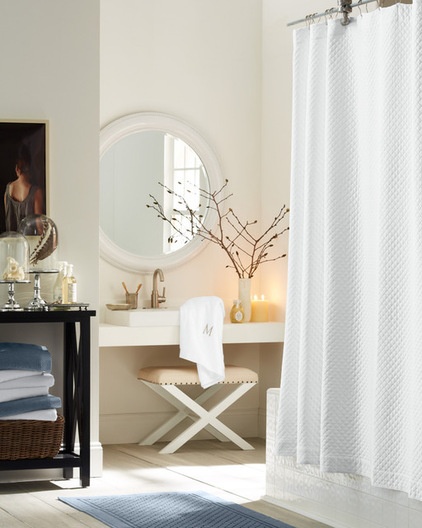
Drapery and Shower Curtains
Besides bedding and upholstery, matelassé can be a nice drapery fabric, particularly in a setting where you don’t necessarily want plain cloth but also don’t want to compete with other patterns, like wallpaper or a prominent fabric.
Mitchell says that depending on the fabric thickness, you probably don’t want to pleat matelassé draperies; she instead recommends a grommet-style drapery. Matelassé is already quite thick, and adding a liner would make it too chunky to take a pleat.
Shower curtains made of matelassé are popular, like the one shown here. They tend to be made of lighter-weight matelassé fabric and a plastic liner doesn’t add too much weight, so a buttonhole top with gliding shower rings works quite well.
See more fabric stories: Chintz | Ticking Stripe | Velvet | Grain Sacks | Crewel
Related Articles Recommended












